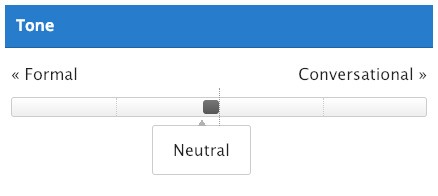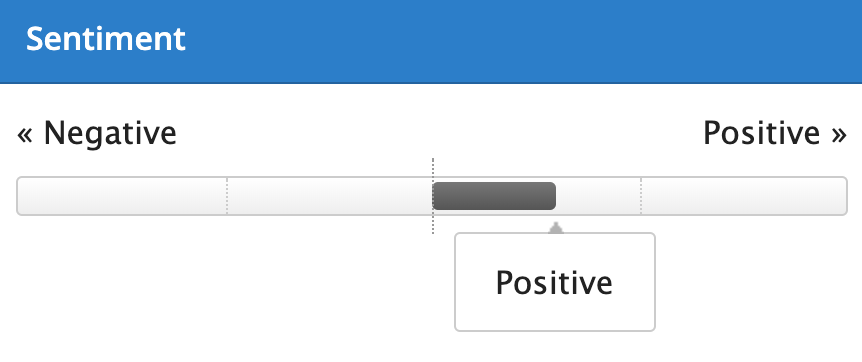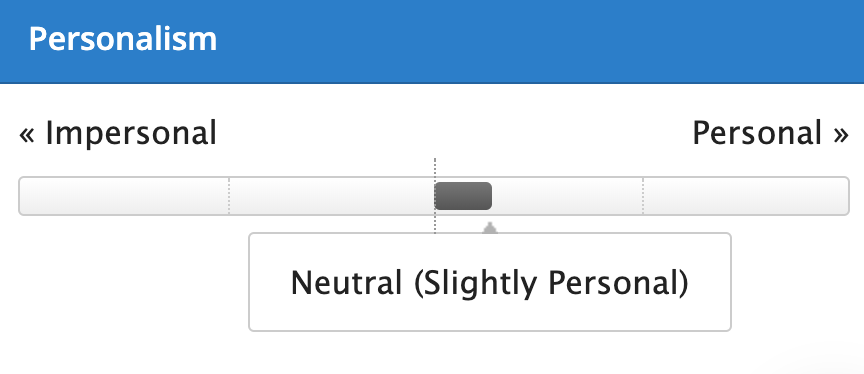We all know the phrase: “It’s not what you say, it’s the way you say it.” How can you connect to your reader on a personal level?
Know your crowd
I’ve worked in a couple of contact centres in the past - whether it was being on the frontline myself, or doing sales admin and listening to my former colleagues all day.
One thing that stood out during this experience was the huge variety of types of customers and how they liked to be addressed.
One customer, let’s call him John Smith, phoned with an order issue. A former colleague assured him, “We’re going to get to the bottom of this for you, John.”
“That’s Mr Smith to you,” he replied rather stuffily.
In the same day, another customer - let’s call him James Doe - phoned with an order issue. He was promised, “We’ll get a replacement sent to you today, Mr Doe.”
“Please, call me James,” he insisted.
Whilst this is a simplistic example, it shows that a one-size-fits-all approach to communication is never going to work.
These contact centre life lessons have, I like to think, given me a good basis for working in customer success. But, they’re also great little pearls of wisdom for watching my tone in my content writing.
Know if your crowd is shirt and tie or jeans and sneakers.
Overall, it goes without saying that your text needs to be audience-appropriate.
In some contexts, such as academic writing, your audience appreciates a formal tone. For most readers, though, especially on the web, a conversational tone is more readable.
The key is keeping an eye on context and keeping your target audience in mind. It’s easier than ever to do this with our tone analysis feature.

Our sliding scale will analyze your content and tell you how formal or conversational it is. Conversational texts use fewer prepositions and more pronouns - they mimic an interaction.
Check out our 3 easy fixes to make your blogs more conversational.
Positive vibes only
Love isn’t an exact science, but numerous scientific studies have proven again and again what makes a good relationship good.
Studies have shown that scientists can predict which relationships are going to last based on the amount of positive and encouraging statements said to each other.
Your readers aren’t a faceless mass - they’re people you want to foster a relationship with. So, keep a close eye on how positive your language is so that you can create a positive relationship in your writing.
create a positive relationship in your writing
Generally, a positive tone tends to come across better. Unless you’re in the beauty industry, you probably don’t want your customers to feel bad about themselves.

Even if you’re talking negatively about something else which doesn’t refer to your brand or product, people might see the negative language and subconsciously associate it with your brand anyway.
By using positive language, your reader will make positive associations with you and this will help them to decide they want your product.
Make it personal
When it comes to marketing, ‘you’ is a powerful word. By using ‘you’ and ‘yours’ more than ‘we’ and ‘our’, you’re more likely to connect to your reader.
This is because they’ll feel you’ve taken the time and empathy to understand them personally. Plus, nobody wants to feel like you’re talking at them and not to them.
So, don’t write your content as if you’re shouting into a vacuum - there are many pairs of eyes on the other side. You’re never going to get engagement if you pretend is just you and your keyboard. You’re not writing your distraught LiveJournal from 2007 anymore.
You’re not writing your distraught LiveJournal from 2007 anymore.
Your reader also wants to know how your product or service is going to directly benefit them - us humans are selfish like that. They want to feel they’re being addressed as an individual - even if they know rationally that they are one of many.
Making your content personal is also important in a landscape increasingly becoming dominated by AI. Yes, robots might be picking up a lot of writing jobs - but there are elements of the human writer that just can’t be mimicked.
We know we can buy a box of plates that’s made in a factory, but we place more value on handmade plates. We’ll read a news story that’s churned out by a robot, but we’ll place more value on a story that’s written by someone we can relate to.

We preach readability, but we don’t want you to make your content so uniform and stark that it loses its humanity.
Improving your readability is an invaluable way to make sure as many people can understand your content as possible. But, you’ve still got to keep that spark of your personality in there so that they don’t merely understand it - they’re excited by it and they want to read it.
So get up close and personal with your reader, address them directly and in most cases, make it conversational. These are all elements of readability that we can’t ignore - let’s all watch our tone and not forget the person who’s taking the time to read our work.
After all, it’s so easy for them to just click away!
Test your readability today and find out how to stop people hitting that back button.


